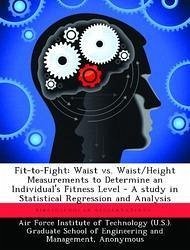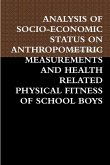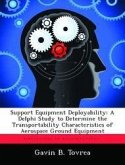Air Force members are to be tested for fitness by measuring their abdominal circumference, counting the number of sit-ups and push-ups they can accomplish, and the time it takes them to run 1 and miles. The abdominal measurement is a one-size-fits-all fitness standard. This research determines that a person's waist-to-height ratio is a better measurement than the waist measurement to estimate an individual's fitness level. This research estimates that all of the variables used to proxy fitness (Gender, Age, Height, Waist Circumference, Waist-to-Height Ratio, Push-Ups, and Sit-Ups) are statistically significant and do represent good estimators of physical fitness. This research also determines that there is a need for separate gender scoring charts for the 1 and mile run, but that these charts do not need to take age into consideration. This research builds on the current Air Force fitness program by offering a new waist-to-height ratio scoring system. Both males and females can now be scored on one waist-to-height ratio chart. Finally, this research estimates how well the separate age and gender charts adjust raw fitness scores into points. The results suggest that the charts do adequately adjust a member's raw fitness score into fitness points.
Hinweis: Dieser Artikel kann nur an eine deutsche Lieferadresse ausgeliefert werden.
Hinweis: Dieser Artikel kann nur an eine deutsche Lieferadresse ausgeliefert werden.








